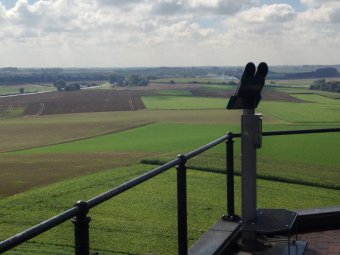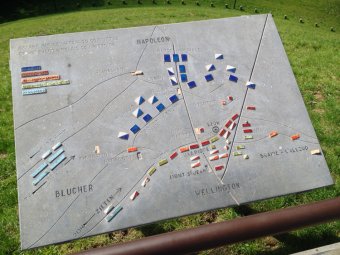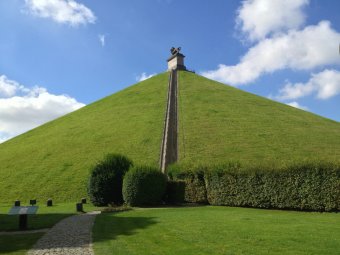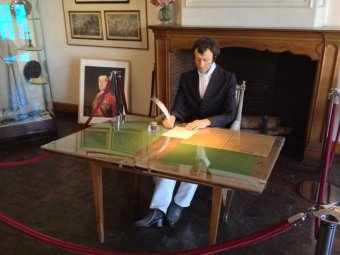
Waterloo Map Belgium
 It’s been two centuries since the climactic Battle of Waterloo, when the army of the French emperor Napoleon faced off against a coalition of British, Dutch and German forces in countryside outside Brussels. The site of this pivotal event in European history still draws visitors, and there’s plenty to see.
It’s been two centuries since the climactic Battle of Waterloo, when the army of the French emperor Napoleon faced off against a coalition of British, Dutch and German forces in countryside outside Brussels. The site of this pivotal event in European history still draws visitors, and there’s plenty to see.
In ABBA’s winning song at the Eurovision Song Contest in 1974, the Swedish supergroup delivered a history lesson to their listeners. It was at Waterloo, the brightly-clad musicians informed the audience, that Napoleon surrendered. Indeed it was, after the great Battle of Waterloo which took place on 18 June 1815. ABBA may have introduced a new audience to the finale of the Napoleonic wars, but the conflict’s location outside Brussels has long drawn visitors. Two centuries later, the custodians of the Waterloo battlefield are preparing for a resurgence of interest in the site.
 Waterloo Battlefield seen from the Lion Mound. Image by Tim Richards/Lonely Planet.
Waterloo Battlefield seen from the Lion Mound. Image by Tim Richards/Lonely Planet.
The 200th anniversary
From 17-21 June 2015 a series of commemorative events will mark the bicentenary of the Battle of Waterloo. The biggest of these are the battle re-enactments on Friday 19 June and Saturday 20 June. On the Friday night the French army will attack, its re-enactors moving against the British and Dutch allies (Belgium having been part of the Netherlands at the time). The following night, it’s the turn of the British re-enactors to counter-attack, with the assistance of their Prussian comrades-in-arms.
Just as the original battle was a huge undertaking, so is its re-staging, says commemoration director Étienne Claude. “We’ll have more than 5, 000 re-enactors here, with 100 cannons and 300 horses, ” he says. “Even the re-enactors are excited about it, for they’ve never experienced a cavalry charge as it was in the day. OK, sometimes we’ve had 50 or 70 guys on horses, but this time we will have a real sense of the battle’s reality, and that’s important. What’s also important is to recreate history as it was, and to avoid, for example, re-enactors with mobile phones. So when you enter the camps, you will see the past as it really was.”
 These camps are the bivouacs, a daytime attraction. From Thursday 18 June to Sunday 20 June these mock military encampments will allow visitors to see how early 19th century armies prepared for war, observing artillery exercises, meals, the changing of the watch, medical care, and the training of new recruits. Each of the nightly battle re-enactments and the daily bivouacs are ticketed events. Tickets can be bought via the official commemoration website (waterloo2015.org).
These camps are the bivouacs, a daytime attraction. From Thursday 18 June to Sunday 20 June these mock military encampments will allow visitors to see how early 19th century armies prepared for war, observing artillery exercises, meals, the changing of the watch, medical care, and the training of new recruits. Each of the nightly battle re-enactments and the daily bivouacs are ticketed events. Tickets can be bought via the official commemoration website (waterloo2015.org).
Map of the Waterloo Battlefield at the Lion Mound. Image by Tim Richards/Lonely Planet.
Battlefield sights
The major attraction at the battlefield is the Butte du Lion, or Lion Mound. It’s hard to miss this artificial hill rising 40m above the surrounding countryside, topped with a massive bronze statue of a lion. Constructed after the war by labourers hauling earth by hand, it commemorates Prince William of Orange, the Dutch crown prince who was wounded in the fight.
It has 226 steps leading up to the top, and it’s well worth making the climb to gain a panoramic view of the battle site. At the top there’s a panel depicting the locations of the opposing troops on the fields below.
 At the foot of the mound is the official battlefield visitor centre, where you can view films which explain the conflict and its consequences. There’s also a well-stocked gift shop and restaurant, the latter serving a vast array of beers.
At the foot of the mound is the official battlefield visitor centre, where you can view films which explain the conflict and its consequences. There’s also a well-stocked gift shop and restaurant, the latter serving a vast array of beers.
The other feature worth seeing is the Panorama de la Bataille, a 360-degree painting erected in 1912. In its own circular building and with 3D props placed between viewers and the battle scenes, it’s an impressive re-creation of the struggle.
Lion Mound at the Waterloo Battlefield. Image by Tim Richards/Lonely Planet.
Other sights
There are several other attractions located away from the visitor centre and the Lion Mound. The most worthwhile to visit is the Musée Wellington, in the town of Waterloo. Formerly the headquarters of the victorious British commander, the Duke of Wellington, each of its rooms is now dedicated to one of the armies in the battle. In pride of place is Wellington’s room, with a mannequin of the great general writing his victory dispatches. Napoleon is represented via a handsome bust in the French room.
To the east of the main battle site is a memorial to the Prussian army’s battle against the French, near the village of Plancenoit. Finally there’s a small museum within Napoleon’s own former HQ, south of the Lion Mound at the Dernier Quartier Général de Napoléon.
Mannequin of Wellington at Musée Wellington, Waterloo. Image by Tim Richards/Lonely Planet with kind permission of the Wellington Museum.









